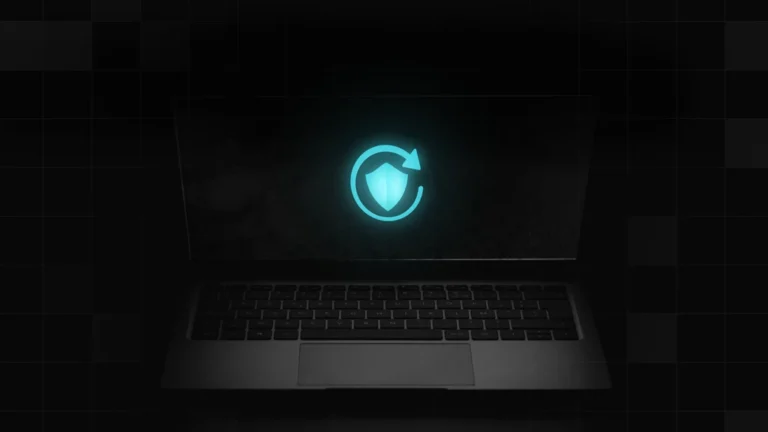What IT Admins Need to Know About the EU Cyber Resilience Act (CRA)
As the cybersecurity landscape across Europe tightens, the EU Cyber Resilience Act (CRA) represents one of the most sweeping changes in how digital products – both hardware and software – need be designed, built, and maintained. For IT admins teams managing digital ecosystems or device fleets, it’s critical to understand what this regulation means for your organization and partners.
What Is the Cyber Resilience Act (CRA)?
The CRA applies to virtually any product (hardware or software) that connects, directly or indirectly, to a device or network, except for specific exclusions like medical devices and autonomous vehicles. It covers both devices and software sold or distributed in the EU and enforces security throughout a product’s entire lifecycle – from design to post-market monitoring. The CRA officially entered into usage in December 2024 and the deadline for compliance is December 11, 2027.
Why the CRA Matters for IT Admins
The CRA aims to bring security accountability to every layer of the supply chain. Manufacturers, importers, and distributors must prove compliance with secure development, vulnerability management, and incident reporting processes. Products that meet CRA standards will display the CE marking, certifying their conformity with EU cybersecurity requirements.
As IT is often the last line of defense for security, the CRA means you’ll need to scrutinize vendor security practices, lifecycle management, and supply-chain integrity. If your organization is using SaaS, IoT, or uses any integrated software that connects to networks or endpoints – you need to start confirming CRA readiness now.
Key Requirements for CRA Compliance in Digital Products
Security by Design: Security controls can’t simply be bolted on. All products must embed security controls like access management, encryption, and secure coding throughout their design and development.
Vulnerability Management: Vendors must monitor, assess, and patch vulnerabilities promptly, maintaining transparent communication channels for disclosure.
For example, when a high-severity vulnerability like a zero-day in an embedded open-source component is reported, triage is performed within 2 business days, and a patch is developed, QA-tested, and released to customers within 14 days for critical issues. This release timeline should be defined in your secure development and patch management policy. Customers are notified of the issue and mitigation steps via email and your support portal.
Incident Notification: Under CRA, organizations must alert EU authorities (such as ENISA) within 24 hours of discovering an actively exploited vulnerability.
Documentation and Traceability: Manufacturers and software providers must keep detailed technical files – including risk assessments, software bills of materials (SBOMs), and patch logs – for at least 10 years (!).
CE Marking and Certification: Critical or high-impact products undergo third-party conformity assessments before being placed on the EU market.
What the CRA Means for Your SaaS-Based MDM Platforms
If your mobile device management (MDM) provider operates as a “product with digital elements” or delivers essential remote processing that keeps devices functional, it falls under the CRA.
That means:
- Your MDM service must demonstrate secure-by-design principles and ongoing vulnerability monitoring.
- Contract terms and partner policies must align with CRA standards for lifecycle security, updates, and supplier obligations.
- If the MDM solution is offered as a general-purpose cloud service (not tied specifically to device operation), it may fall outside CRA’s direct scope but still within related regulations such as NIS2.
- CE marking and official documentation will be required to confirm compliance.
How IT Admins Can Prepare for the CRA Now
For IT Administrators:
- Start reviewing your vendor list to confirm CRA-aligned practices.
- Ensure your organization maintains visibility into SBOMs and patch records.
- Update procurement and contract templates to include CRA compliance clauses.
- Engage with security and compliance teams to plan audits or third-party verifications before the 2027 deadline.
CRA isn’t just another compliance checkbox – it’s a framework for sustainable cyber hygiene across the EU digital marketplace. For IT admins, understanding these requirements today will help your organization stay resilient, compliant, and trusted in tomorrow’s regulated ecosystem.
Want more info? Check out these additional resources for your team:
- The CRA Explained https://www.cyberresilienceact.eu/the-cra-explained/
- Cyber Resilience Act (CRA): Step-By-Step Guide to Compliance https://yogosha.com/blog/cra-cyber-resilience-act-guide/
- EU Cyber Resilience Act: What You Must Do Before 2027 https://strobes.co/blog/eu-cyber-resilience-act-what-you-must-do/
Learn how Addigy can help you lead the charge in Apple MDM compliance.







